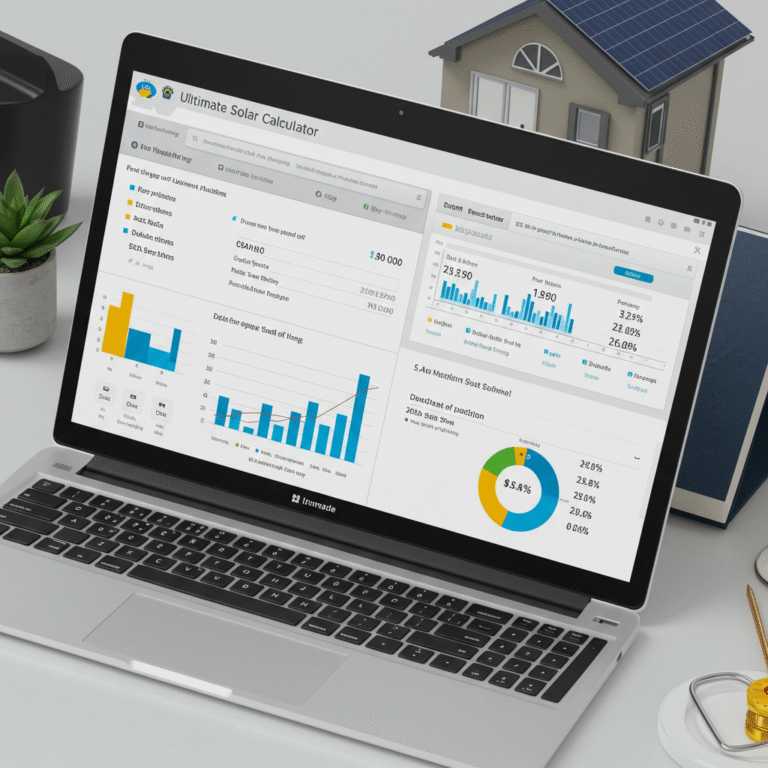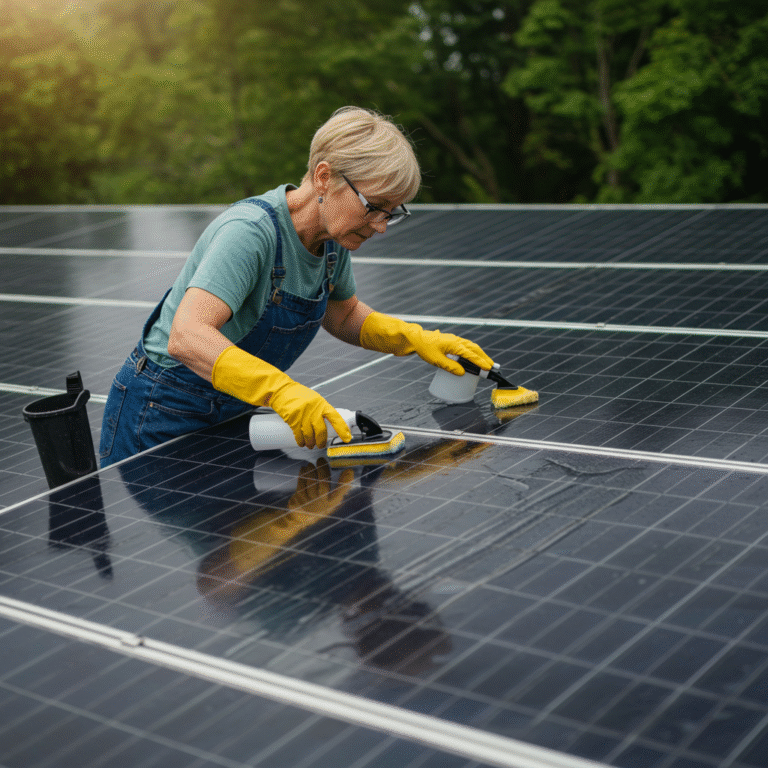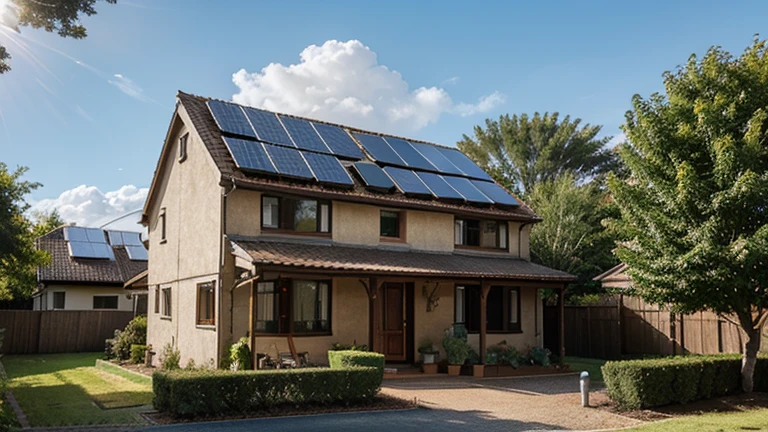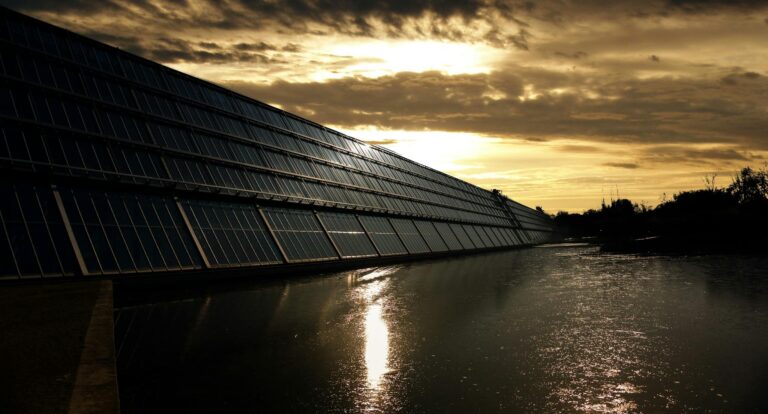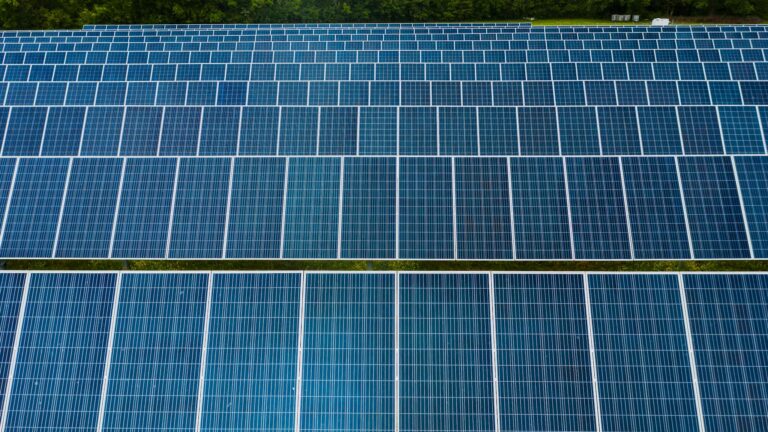Introduction
Solar energy is one of the fastest-growing renewable energy sources, powering millions of homes and businesses worldwide. But how exactly does it work? If you’re new to solar power, this guide breaks down the science, technology, and benefits in simple terms.
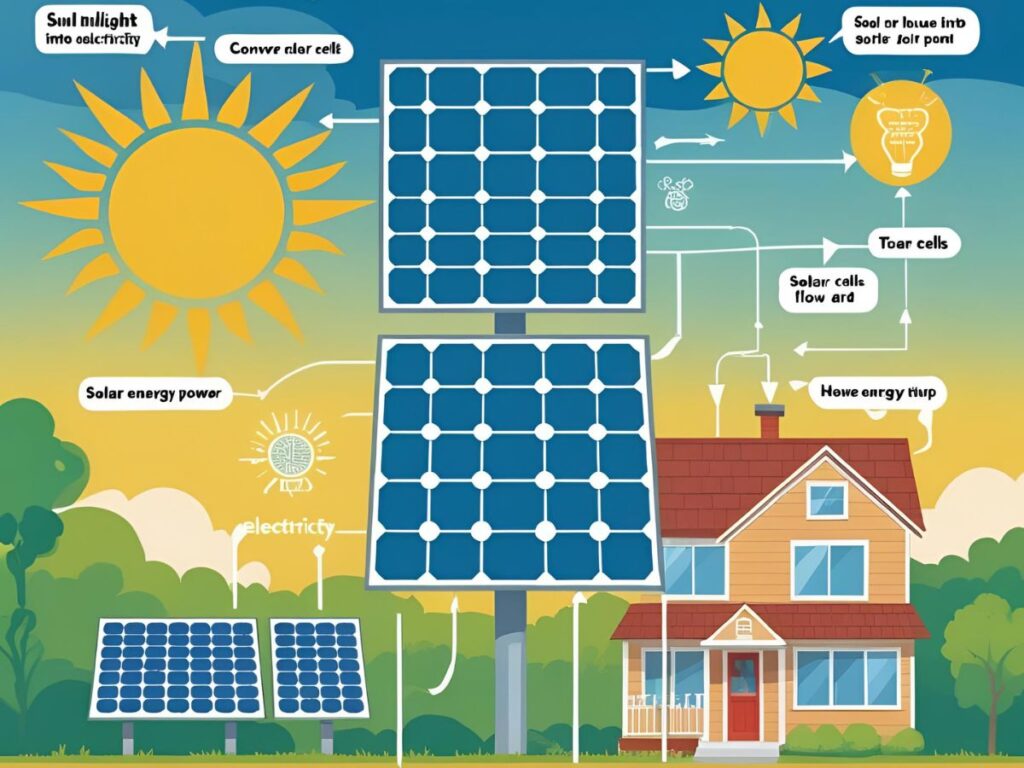
By the end, you’ll understand:
✅ How sunlight turns into electricity
✅ The key components of a solar power system
✅ Whether solar is right for your home
✅ Common myths debunked
Let’s dive in!
How Solar Panels Convert Sunlight into Electricity
1. The Science Behind Solar Energy
Solar panels work through the photovoltaic (PV) effect, where sunlight knocks electrons loose from atoms, generating an electric current. Here’s the step-by-step process:
- Sunlight Hits Solar Cells – Made of silicon (a semiconductor), solar cells absorb photons from sunlight.
- Electrons Get Excited – The energy from photons frees electrons, creating direct current (DC) electricity.
- Inverter Converts DC to AC – Household appliances use alternating current (AC), so an inverter transforms the electricity.
- Power Goes to Your Home – The converted electricity powers your lights, fridge, and other devices.
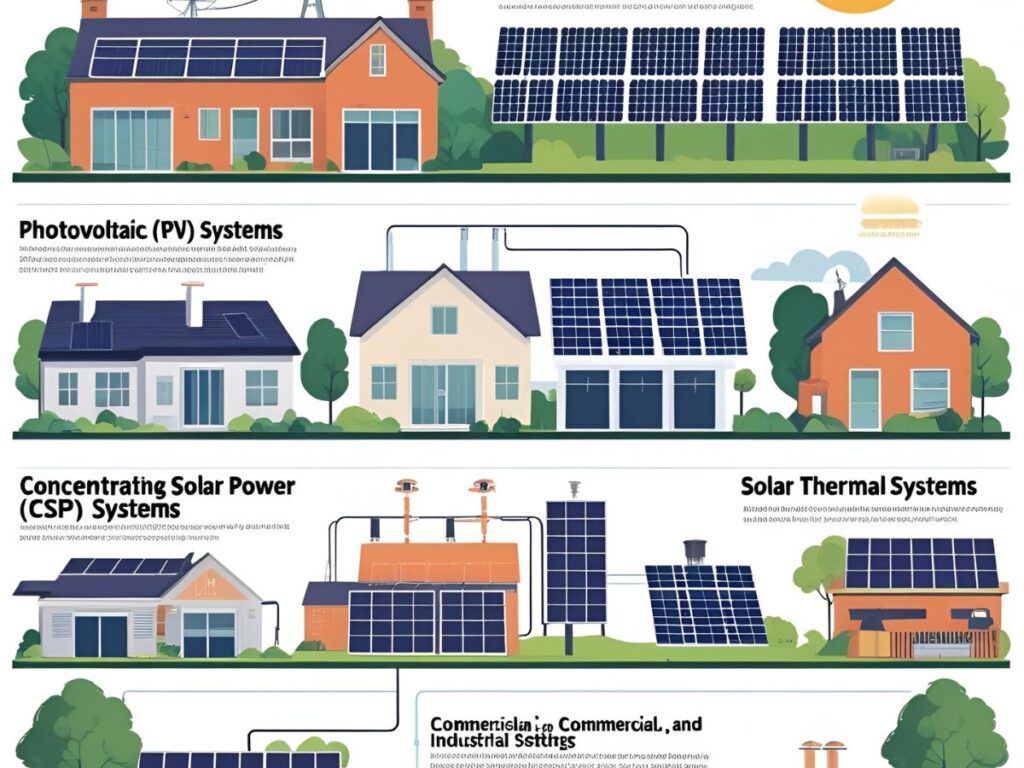
Photons hit solar panels
- Solar panels are made of photovoltaic cells, usually silicon-based. Each cell responds to sunlight (photons) by knocking electrons free using the photovoltaic effect .
- Electric field creates charge flow
- Cells are built with p-type and n-type layers that form an electric field. Freed electrons move through this field, creating a direct current (DC)
- Cells combine into panels
- Each panel contains many cells in series/parallel to generate usable voltage and current.
This detailed explanation can trigger search terms like “how solar panels work step by step” and “beginner solar guide.”
3. From DC to AC: The Role of the Inverter
Homes and most appliances use alternating current (AC). Since panels generate DC, an inverter converts it to usable AC electricity
- String inverters convert DC from many panels at once.
- Micro‑inverters sit behind each panel, optimizing individual performance, especially in shade
Inverters often include MPPT (Maximum Power Point Tracking) to maximize panel output under varying conditions
4. Powering the Home & Exporting to the Grid
Once converted to AC, electricity flows into your home’s electrical panel, powering appliances
- If production exceeds demand, the meter records excess power sent to the grid.
- With net metering, you receive credit or payment for surplus energy
This setup offers energy savings and income potential from unused solar generation.
5. Optional Battery Storage for Energy Independence
Adding a battery enables you to store excess energy for later use:
- Lithium-ion batteries allow energy storage during the day for nighttime or outages
- This setup promotes energy independence and grid resilience .
A simple Q&A around battery storage draws in traffic using terms like “solar energy for beginners battery” and “solar system step by step.”
6. Supporting Equipment: Mounting, Racking & Trackers
- Mounting structures keep panels securely positioned—roof or ground-mounted
- Proper tilt and orientation (typically 30°–60° pitch, facing south in the Northern Hemisphere) maximize sunlight capture .
- Solar trackers (optional) follow the sun to increase efficiency but are mostly used in large-scale installations
2. Key Components of a Solar Power System
| Component | Purpose |
|---|---|
| Solar Panels | Capture sunlight and generate DC electricity |
| Inverter | Converts DC to usable AC power |
| Meter | Tracks energy production & usage |
| Battery (Optional) | Stores excess energy for later use |
| Grid Connection | Allows net metering (selling extra power back) |
Types of Solar Energy Systems
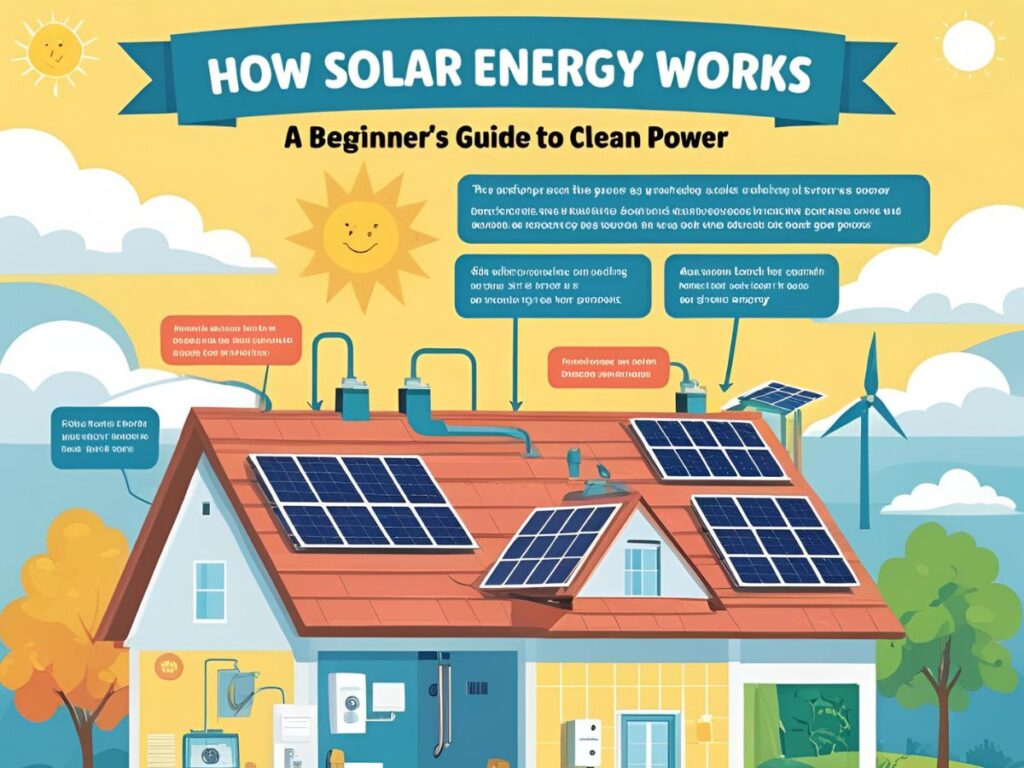
1. Grid-Tied Solar Systems
- Connected to the public electricity grid.
- Excess power is sent back for credits (net metering).
- No batteries needed (lower cost).
2. Off-Grid Solar Systems
- Fully independent, no connection to the grid.
- Requires solar batteries for storage.
- Ideal for remote areas.
3. Hybrid Solar Systems
- Combines grid connection + battery storage.
- Provides backup power during outages.
Do Solar Panels Work at Night or on Cloudy Days?
- At Night? No—solar panels need sunlight. (But battery storage or net metering helps!)
- On Cloudy Days? Yes, but at 10-30% lower efficiency.
- In Winter? Yes, as long as panels aren’t covered in snow.
FAQ Section
1. How long do solar panels last?
Most solar panels last 25-30 years, with gradual efficiency loss (~0.5% per year).
2. Can I install solar panels myself?
While DIY kits exist, professional installation ensures safety, efficiency, and warranty protection.
3. Do solar panels require maintenance?
Minimal upkeep—just occasional cleaning (rain often does the job) and inspections.
4. What happens to solar panels after they expire?
They can be recycled (80-90% of materials are reusable). Many companies offer take-back programs.
5. Will solar panels work during a power outage?
Only if you have battery storage or a hybrid system. Grid-tied systems shut off for safety.
Conclusion: Is Solar Energy Worth It?
Solar power is a clean, cost-effective, and reliable energy solution for most homeowners. While the upfront cost can be high, incentives like tax credits, rebates, and net metering make it more affordable than ever.
Next Steps:
🔹 Calculate your potential savings with a solar cost estimator.
🔹 Get quotes from local installers to compare pricing.
🔹 Check for incentives in your area (e.g., federal tax credit).
By harnessing the sun’s energy, you can reduce electricity bills, increase energy independence, and lower your carbon footprint. Ready to go solar? ☀️
